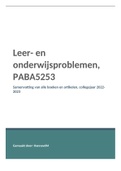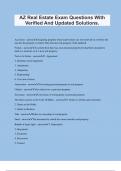Summary
Samenvatting Leer- en onderwijsproblemen : Alle artikelen en hoofdstukken uit de boeken!
- Course
- Institution
- Book
In deze samenvatting zijn alle artikelen en hoofdstukken voor het tentamen van Leer- en onderwijsproblemen in 2023 samengevat. Hiermee ben je dus goed voorbereid voor je tentamen! De hoofdstukken uit de boeken 'Handboek diagnostiek in de leerlingenbegeleiding' en 'Handboek dyscalculie en rekenpr...
[Show more]





